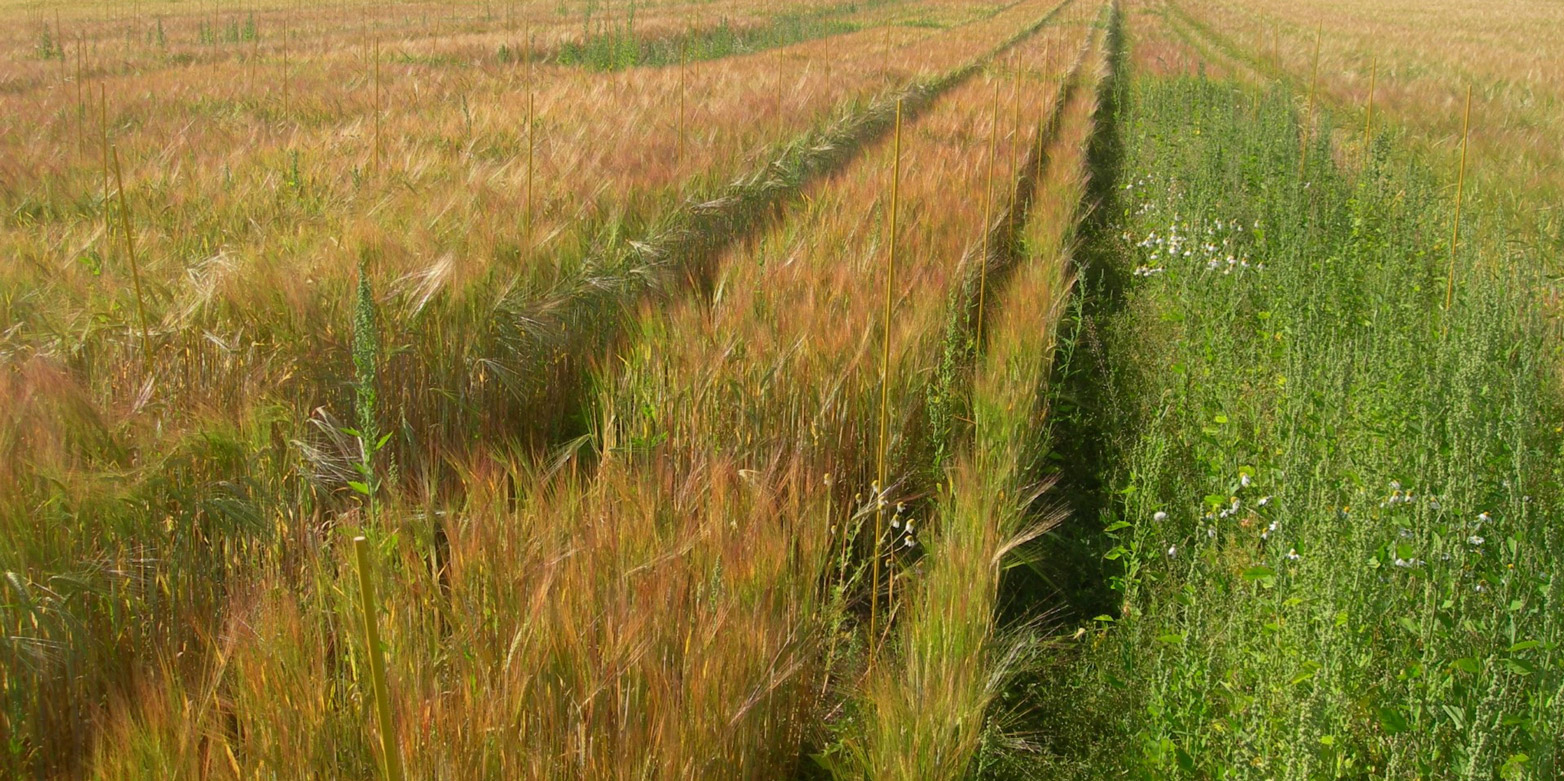Mixed cultures, not monotony
Biologically diverse plant communities are more productive and resistant than monocultures, says Christian Schöb. He calls for breeding programmes focused on polycultures.

In 1994, Switzerland ratified the Convention on Biological Diversity in Rio, committing itself to the protection of biodiversity1. However, that’s not the only reason that I recommend diversifying our agriculture. Since the convention came into force in 1995, research has proven that biodiversity has an incredibly wide array of benefits2,3. In plant communities, a mixture of varieties or species generally produces more biomass than monocultures, and the biomass yield also fluctuates less over time.
However, our fields and gardens have not yet made much use of these findings. Polycultures using different species are a rarity in Swiss agriculture: in 2016, polycultures made up 0.03 percent of bread grain and 0.36 percent of feed grain4. As agriculture has become more intensive, the biodiversity in crop cultivation has sharply decreased – not only in the number of species, but also in the number of varieties per species, i.e. the genetic diversity. This means that today, many areas of cultivated land are monocultures of one species or even a single genotype.

Simplicity is complex
The advantages of this varietal purity so far appear to have trumped those of diversity. However, this estimate often undervalues the fact that the simplicity of a monoculture entails a lot of work and a high use of resources, not to mention risks. For example, monocultures are a paradise for specialised pests – as shown by historic examples such as the potato blight that caused mass famine in Ireland, but also by the monocultural banana production in South America threatened by the pathogen which produces the Panama disease.
“A monoculture is like a cloned football team made entirely of strikers; they all stand in one half and score goals, but none of them defend.”Christian Schöb
This simplicity also means that each individual plant in the field not only requires the same resources, but has the same properties. A monoculture is therefore like a cloned football team made entirely of strikers; they all stand in one half and score goals but none of them really make any attempt at defending. This means that monocultures only work when the resources and conditions for the culture are optimally prepared via external input, and pests are controlled – namely when they are looked after and “defended”. This makes chemical and biological fertilisers and pesticides indispensable for monocultures.
A combination of complementary strengths
I think that polycultures could provide a remedy here. In Switzerland, mixed grasslands are already widespread, as are barley-pea mixes for feed crops and winter wheat mixes as bread grain.
The benefits of polycultures lie in the complementarity of their components. For example, barley provides a prop for the otherwise low-lying peas, which simplifies mechanical harvesting, while the peas provide the barley with fixed nitrogen from the air. With wheat mixes, species with various kinds of disease resistance can be combined, which enables a high and stable good-quality yield using significantly fewer pesticides. In short, plant teams are also highly attractive from an ecological point of view.
Targeted breeding for polycultures
To utilise this potential, I believe that the agricultural sector needs to rethink its approach. Together with a colleague from the University of Zurich, I was able to prove that the yield-increasing positive interactions between plant species can only fully develop when the plants are cultivated over generations in polycultures5. That means that targeted breeding programmes are required for mixed crop plant cultures.
As our survey of farmers as part of the EU project DIVERSify6 showed, there are also many other barriers to widespread mixture cropping. Above all, these relate to a lack of knowledge about how we can adapt our methods designed for monocultures to polycultures – whether in terms of planting, crop protection, harvesting, subsequent processing or marketing.
There is a real need for action here, but I am convinced that it will be worthwhile. The effects of biodiversity do not stop at the gates of farms, any more than the monocultural risks do. So let’s use diversity to make agricultural production sustainable without losing productivity!
References
1 external page Convention on biological diversity
2 external page Jena Experiment
3 external page Cedar Creek Ecosystem Science Reserve
4 Agrarbericht 2017. Federal Office for Agriculture FOAG.
5 Schöb, C., Brooker, R.W., Zuppinger-Dingley, D. (2018).
Evolution of facilitation requires diverse communities. Nature Ecology & Evolution. doi: external page 10.1038/s41559-018-0623-2
6 Designing Innovative plant teams for Ecosystem Resilience and agricultural Sustainability: external page DIVERSify
Comments
No comments yet